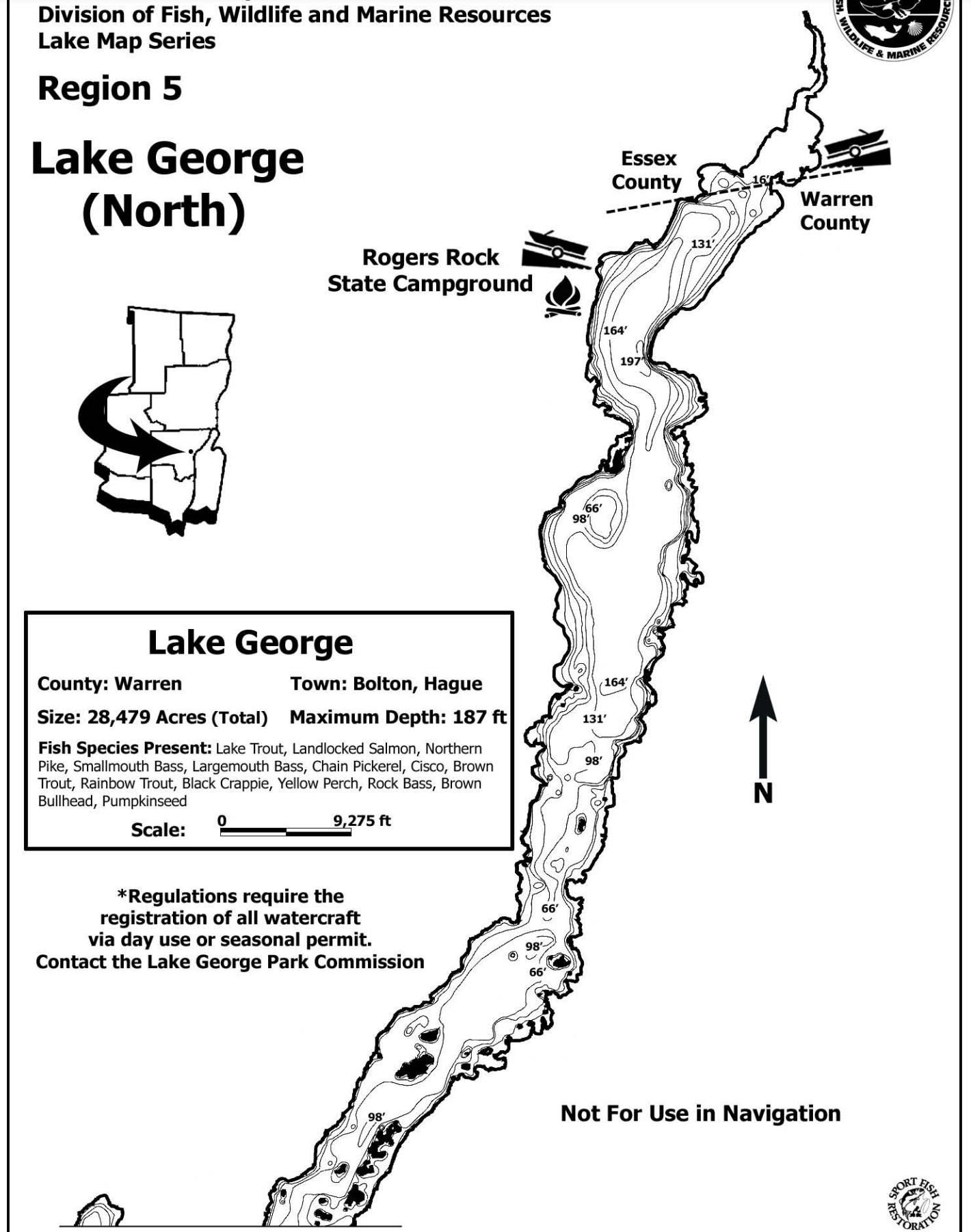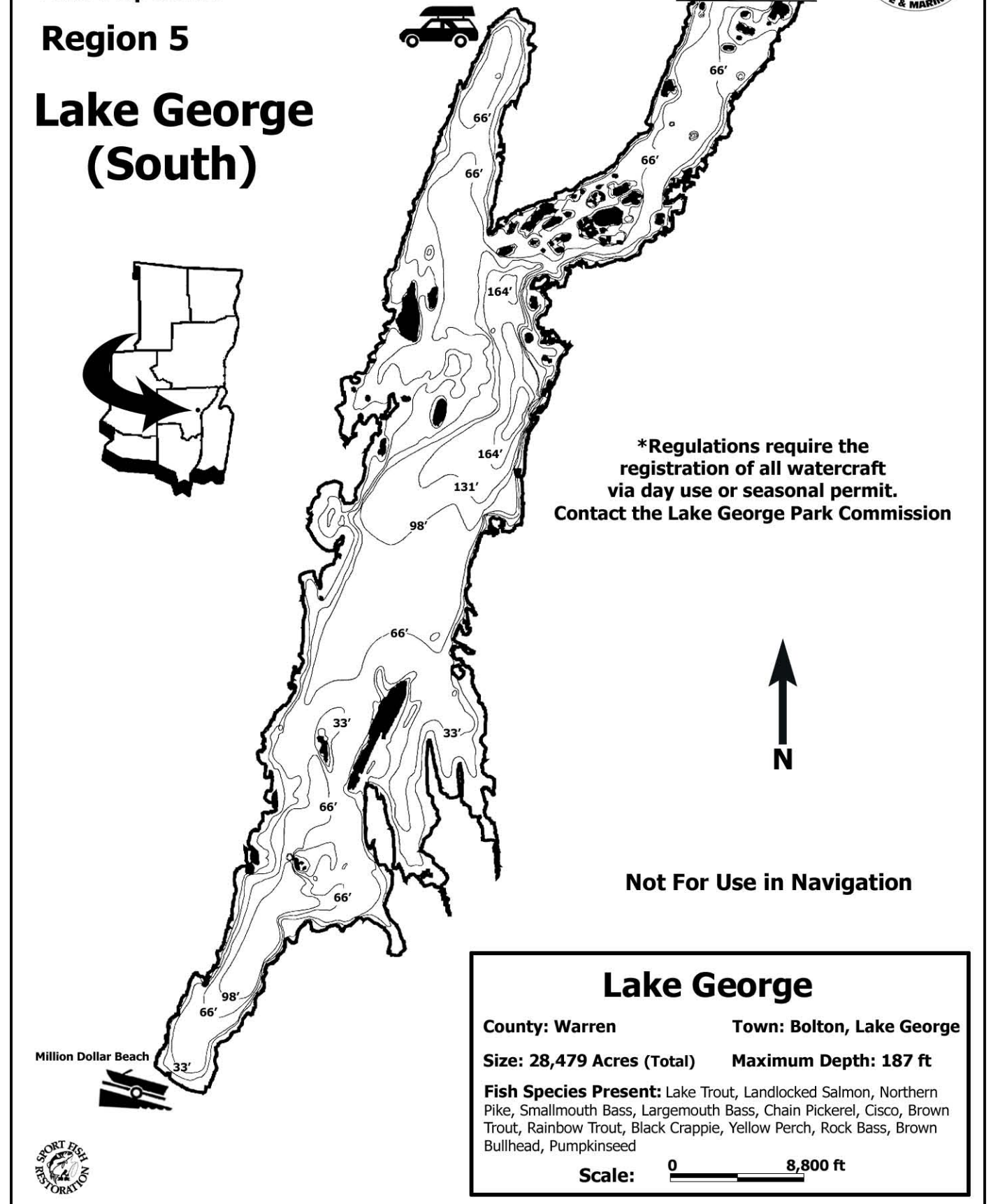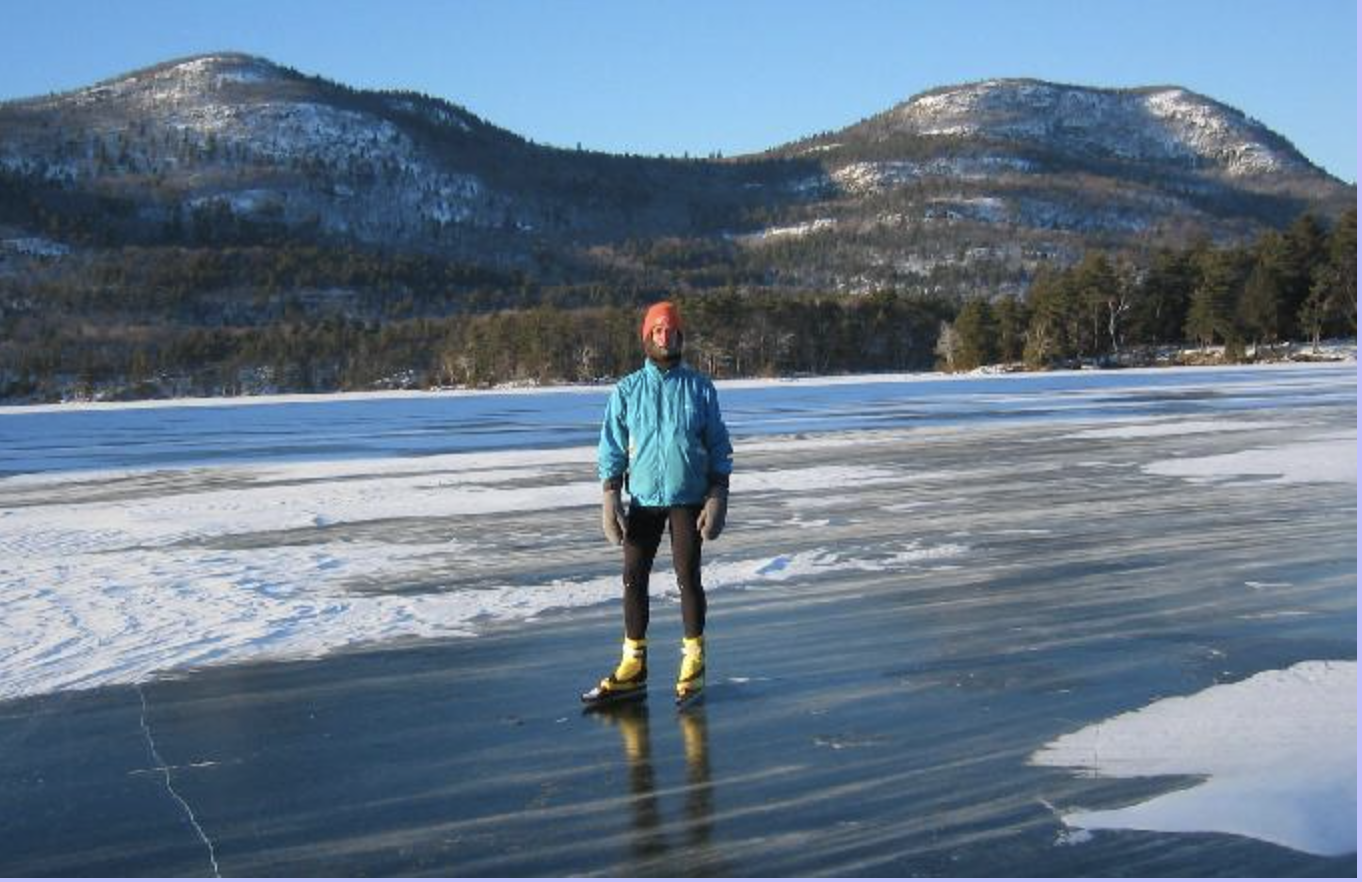New York Lakes
On this page: Lake George, Lake Placid, Great Sacandaga Lake and Schroon Lake. See also New York State Atlas of Lakes
Lake George
Lake George, Queensbury, Fort Ann, Bolton, Dresden, Putnam and Ticonderoga, NY
Elevation 320 feet
28,479 acres
187’ maximum depth
70’ average depth
What is it about Lake George that stirs songwriters into action? Try the most spectacular scenery east of the Grand Canyon. Imagine a thirty-two-mile-long Norwegian fjord plopped down into the middle of the Adirondack Mountains. Long and narrow with a jagged shoreline, the lake is hemmed in by mountains whose shoulders drop 2,000 vertical feet or more into the deep, clear water. Much of the lakeshore is so steep and rugged that no road has ever traversed it. Secluded coves shelter isolated cabins and campsites accessible only by boat in summer or across the ice in winter.
One of America’s oldest summer resorts, Lake George was discovered long ago by visitors from New York City. Hordes of them. Songwriter Christopher Shaw likes to exaggerate, but his claim that his hometown swells from a winter population of 3,500 to ‘a little over a million in the summer’ isn’t far off the mark. Still, a resourceful adventurer can enjoy Lake George without the crowds.
Two hundred islands dot the lake’s surface. Islands with names like Flirtation, Scotch Bonnet, Rock Dunder, Floating Battery, and Hen & Chickens. Fortunately, most of the islands are owned by the State of New York, which has established campsites on several dozen of them. Imagine waking up, opening your tent flap, and seeing a glistening expanse of water lying at the foot of a 2,500-foot peak.
Whether you’re on an island with 50 campsites or just a single site, each campsite has its own dock, tent platform, stone hearth, outhouse or chemical toilet, and a garbage can that’s emptied daily. Since the nearest roads are miles away, there’s no electricity or running water. Long-term campers (the maximum stay is two weeks) come equipped with essentials like ice chests, gas stoves, laptop computers, and battery-powered TVs and VCRs.
To see what it’s like in the winter, check out the photos below.
Lake Placid
Lake Placid Village, NY
Great Sacandaga Lake
Broadalbin, Mayfield, Northville
and Hadley, NY
Schroon Lake
Chester, Horicon and Schroon, NY
Elevation 1858 feet
2173 acres
Maximum depth 151 feet
Average depth 52 feet
Elevation 771 feet
24,707 acres
Maximum depth 74 feet
Average depth 32 feet
Elevation 807 feet
4105 acres
Maximum depth 152 feet
Average depth 56 feet








